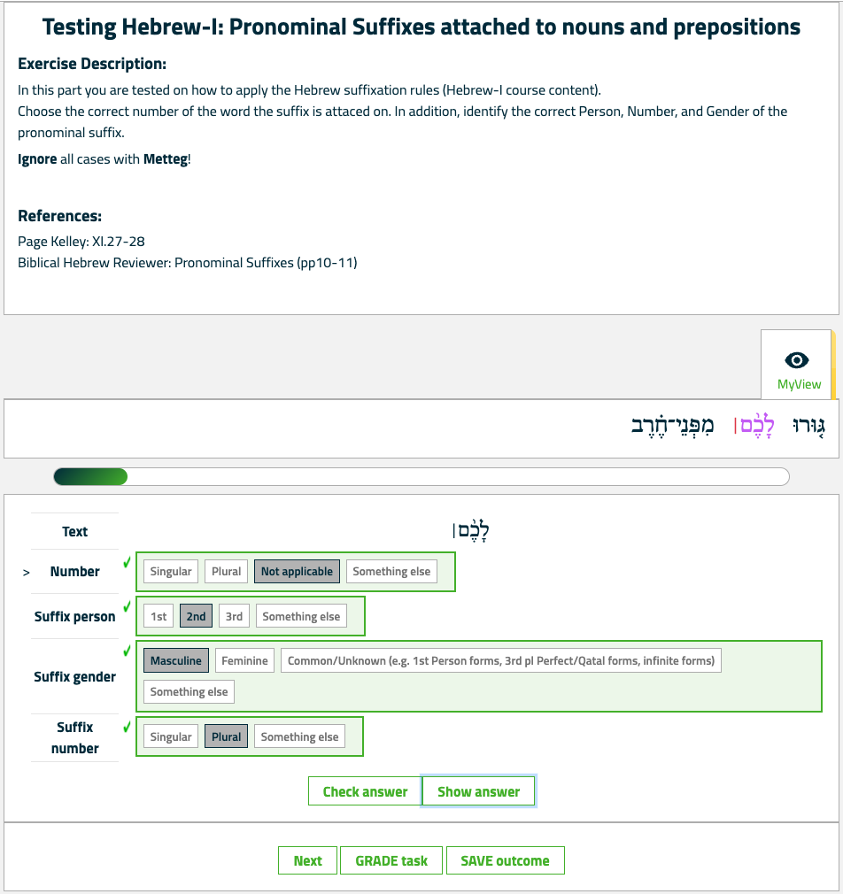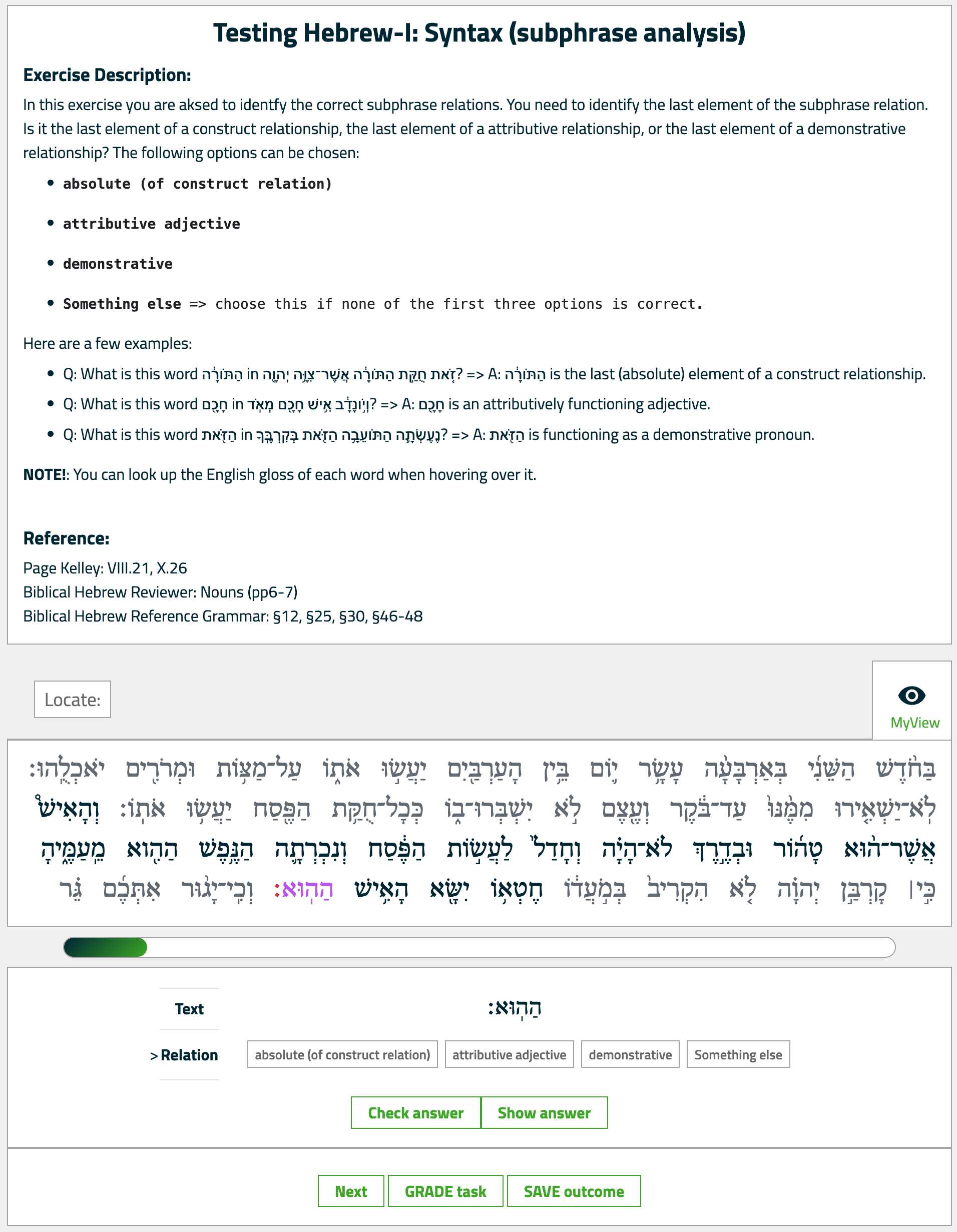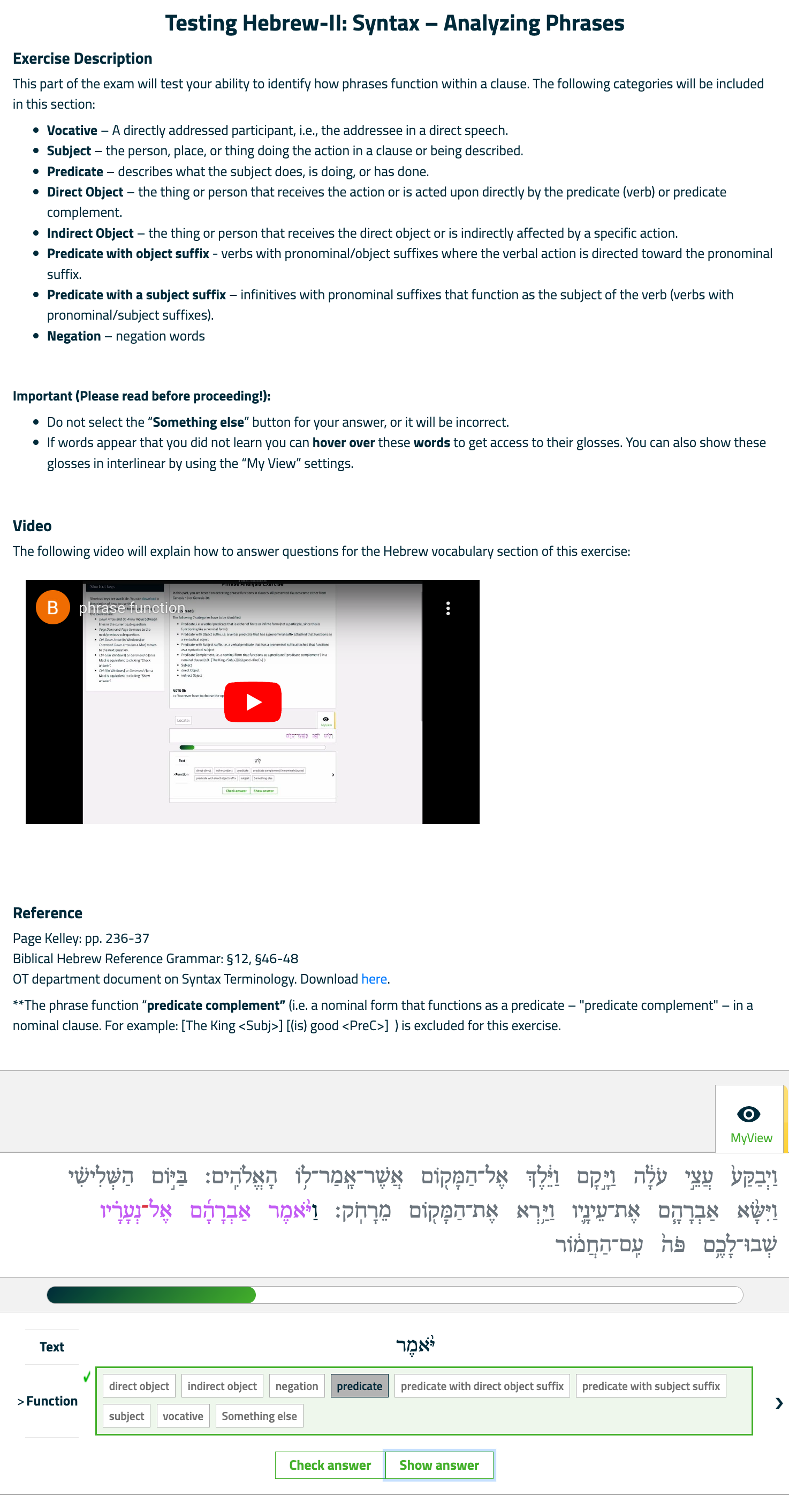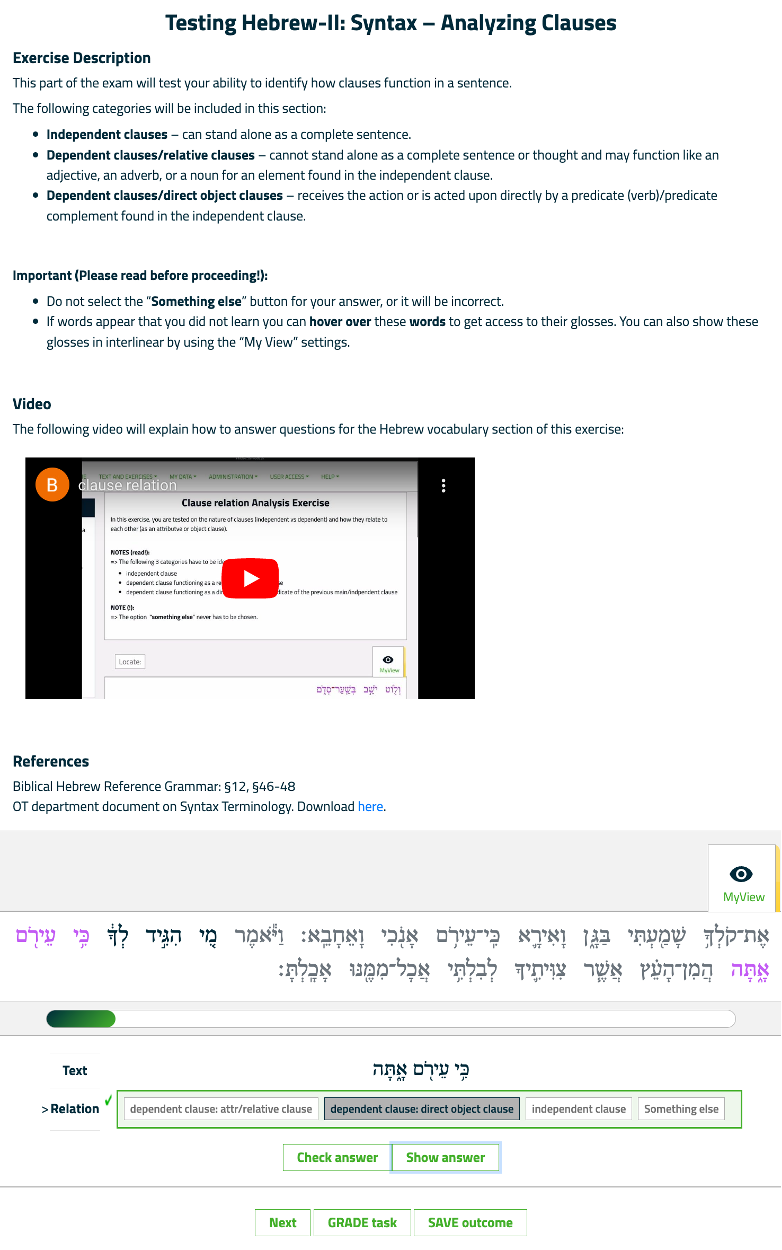Help pages
Example: First Hebrew exercise
Example: Second Hebrew exercise
Example: Third Hebrew exercise
Example: Second Greek exercise
Example: Create a simple Hebrew exercise
Example: Create an advanced Hebrew exercise
Example: Create a simple Greek exercise
Andrews University Final Exam: Hebrew I (OTST551)
Andrews University Final Exam: Hebrew II (OTST552)
Andrews University Final Exam: Advanced Hebrew (OTST625)
Andrews University Hebrew Placement Exam
Hebrew Proficiency Exam for OTST Exegesis classes
Andrews University Final Exam: Intermediate Greek (NTST552)
Andrews University Greek Placement Exam
The Hebrew Proficiency Exam for OTST Exegesis Courses
Introduction
As stated in the syllabus and the Academic Bulletin, enrollment in an Old Testament exegesis course requires prior successful completion of a qualifying Hebrew course or a passing score on the Hebrew Placement Exam.
However, it is not uncommon for students to have met this requirement long before enrolling in an exegesis course. As a result, their working knowledge of Hebrew—essential for successful participation in the course—may have diminished over time.
To address this, every student enrolled in an OTST exegesis course is required to take a Hebrew proficiency test at the beginning of the term. This diagnostic assessment helps students evaluate whether their current Hebrew skills are sufficient for the demands of the course.
Test results are provided immediately. Based on their performance, students can make an informed decision about whether to continue in the course or withdraw if they feel unprepared. The test does not count toward the final course grade; its sole purpose is to assess the likelihood of successful course completion. In cases of weak performance, the instructor will offer appropriate guidance and support.
The Exam
To ensure you are ready for the Hebrew proficiency test at the start of the semester, it is strongly recommended that you refresh your foundational Hebrew skills in advance. The TOHFL-I and TOHFL-II courses are excellent resources for this purpose. Developed in collaboration with leading institutions—including Vrije Universiteit Amsterdam, the Evangelical Faculty of Theology Leuven, the Protestant Theological University (Netherlands), the United Bible Societies, and Andrews University—these courses are available free of charge. Full course details can be found [here].
In addition to the TOHFL courses, you are encouraged to review your Hebrew vocabulary and syntax. The TOHFL Vocabularly List is a helpful tool for vocabulary review. For syntax, the OTST department provides a comprehensive Syntax Definitions document, which can be downloaded here. Familiarity with these definitions is assumed for the exam.
The table below outlines the components of the Hebrew proficiency test. Each exam part is hyperlinked (underlined, blue table headers) so that students can begin exam preparations. Click on the hyperlink and start exercising with the exam materials.
| Noun Morphology | Pronominal Suffixes attached to Nouns and Particles | Verbal Morphology | Subphrase Analysis (constructs, attribution) | Phrase Function Analysis | Clause Relation Analysis |
|
|
|
|
|
|
|
How to take the Hebrew Exam for OTST Exegesis courses?
To get started, it is important to create a BibleOL (1) user account, (2) update one's user profile, and (3) enroll in a class. Below each single step is explained in detail with instructional videos.
- Creating a User Account on BibleOL:
- Updating one’s User Profile:
Change your User Profile and choose the profile “AndrewsUniversity”:
- In BibleOL enroll in the class “AU OTST Exegesis Hebrew Exam”.
The following video shows how you can enroll in classes:
- Once you have enrolled, you can see the Exam show up under “TEXT AND EXERCISES/Exams”. The following video shows how you can find and take exams on BibleOL:
- When you are finished taking your exam you can lookup your exam results instantly.






